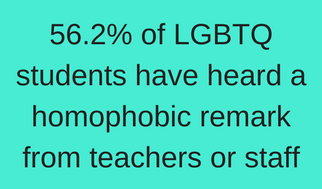NAGC works to support those who enhance the growth and development of gifted and talented children through education, advocacy, community building, and research
Many educational groups are concerned about how best to meet the particular needs of students with diverse sexual orientations and gender identities. Parents want to see curriculum and planned activities that respond to the learning needs of their children. However, not all schools and districts have leaders and teachers with backgrounds in gifted and talented education who also know how best to address the particular needs of gifted students who are gay, lesbian, bisexual, transgender, and/or questioning (gifted LGBTQ).
Because of the limited information available regarding gifted learners with diverse sexual orientations and gender identities, NAGC convened a task force of administrators and gifted educators to develop tools that parents can use to inform themselves and leverage as the starting point for advocacy and implementation of  services for their gifted LGBTQ children.
services for their gifted LGBTQ children.
NAGC believes in supporting the success of all gifted students. Factors such as race, gender, ethnicity, level of English proficiency, socioeconomic backgrounds, sexual orientation, and gender identity should not become barriers to opportunities for gifted students. The purpose of this toolbox is to supply information specific to gifted LGBTQ to participate and thrive in school.
The recommendations offered by NAGC can assist parents and guardians in advocating for their child’s needs. The statistical information included below are not intended to shock or frighten family members of gifted LGBTQ youth—they are provided to deepen knowledge of the issues that can exist at school. Often, having statistics, in addition to the statistical information, knowledge of relevant legislation, and legal cases (for more information, see Administrator’s Toolbox), to cite can help parents and guardians combat complacency, should they encounter it in their advocacy efforts.
According to the 2015 National School Climate Survey, conducted and compiled by the Gay, Lesbian, Straight Education Network (GLSEN, 2016), LGBTQ students in American schools continue to face aggression and negative environments on a regular basis.
These statistics inform educators and parents about the experiences of LGBTQ students in school. When the element of giftedness is compounded with gender/sexual minority status, the students are, in the view of classmates, teachers, and administrators, twice Other. This dual status makes these youth even more vulnerable to verbal and physical abuse at school than either giftedness or gender/sexual minority status would on its own (Manzella, 2012). And the youth themselves may not only feel different from other youth because of their gifts, but may also feel isolated due to their sexual orientation and/or gender expression (Cross, 2013; NAGC, 2015; Sedillo, 2013; Treat, 2008, 2016; Whittenburg & Treat, 2009).